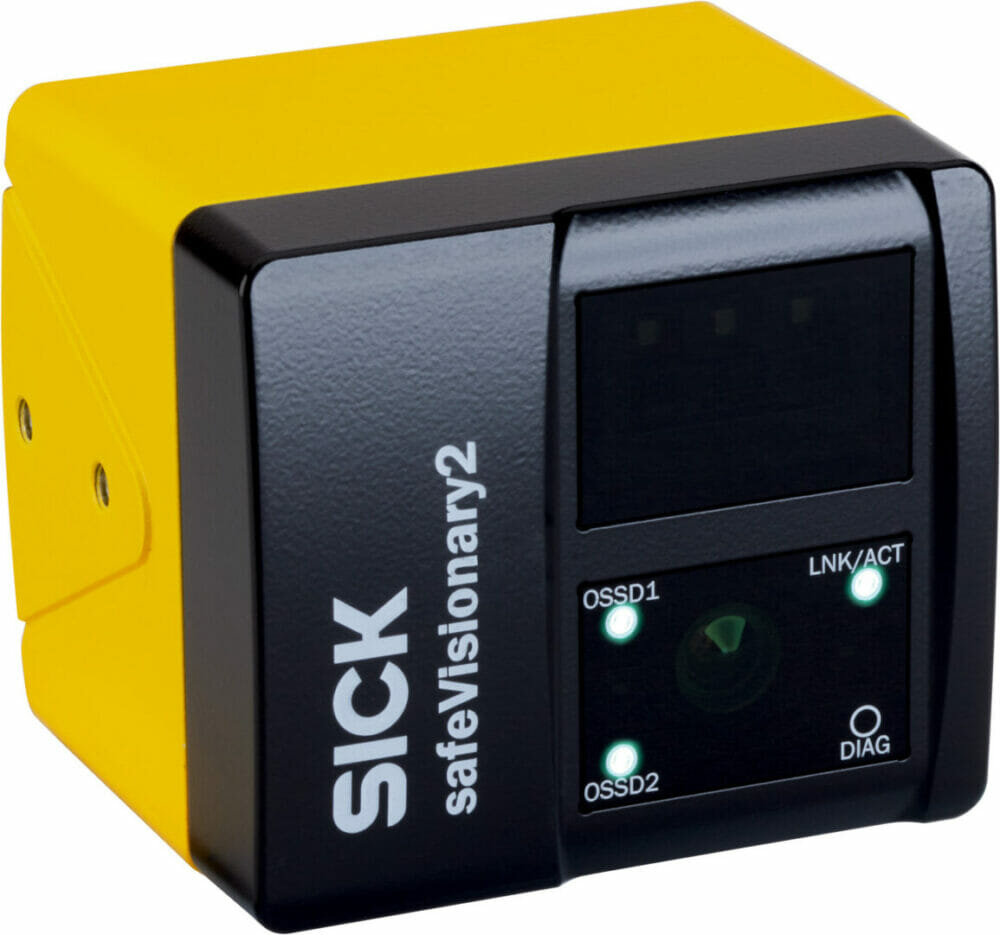SICK has launched the safeVisionary2, the world’s first compact 3D time-of-flight camera with safety certification performance level c, in accordance with ISO 13849. The safeVisionary2 promises to use the benefits of three-dimensional environmental perception to improve safety and productivity in many manufacturing and logistics environments.
“The safeVisionary2 represents a new milestone in safety technology,” said Dr Martin Kidman, SICK’s Market Product Manager for Safety Solutions. “Until now, using LiDAR sensors has been the standard for monitoring protective fields in a two-dimensional plane. In contrast, the safeVisonary2 uses 3D time-of-flight technology to monitor a three-dimensional space.
“This offers some exciting new possibilities for certain applications, particularly for increasing the availability of Automated Guided Vehicles (AGVs) and other mobile robots, as well as to improve the productivity and versatility of human-robot collaboration.”
Automated Mobile Robots
In Automated Mobile Robots (AMRs), by scanning in three dimensions the SICK safeVisionary2 offers enhanced protection where there is a risk of collision with objects or people that are higher than the field of a standard 2D safety laser scanner. In addition, perception to the sides of the AMR provides more protection to people when the vehicle is turning or rotating, for example after loading and unloading operations. The safeVisionary2 may also enable automatic restart, so more available and productive working is possible.


The safeVisionary2 also ensures greater levels of safety when using mobile service robots. As well as monitoring protective and warning fields in the robot’s travel path, the camera has a contour detection field that can reliably identify cliff hazards, such as stairs or ramps.
Collaborative Human Robot Safety
Using the safeVisionary2’s safe 3D environmental perception enables more true collaboration between robots and workers with fewer stops and reduced safety distances in stationary applications. The Safe Visionary2 can detect people’s upper bodies and therefore dangers such as reaching or leaning into hazardous areas. With the safeVisionary2, protection of the robot work area at human head height is extended, so robots can continue to operate safely with reduced force and speed.
Versatile Data Output
In addition to its safety functions, the SICK safeVisionary2 can also output precise 3D measurement data for automation tasks, which can be used for navigation, for example. At 30 images per second and a resolution of 512 x 424 pixels, the camera delivers reliable intensity and distance values to support both dynamic vehicle navigation and object detection for collision avoidance.
In static robot applications, the safeVisionary2 can also be used, for example, for empty pallet recognition in robot palletising and depalletising applications, alongside the safety function.
The SICKsafeVisionary2’s compact 70 x 80 x 77 mm dimensions allows for easy integration into AGVs, AMRs or tight machine spaces. The camera is also highly reliable thanks to solid-state technology that makes it extremely resistant to shocks and vibration. It can also be used reliably in environments with ambient light or darkness.







